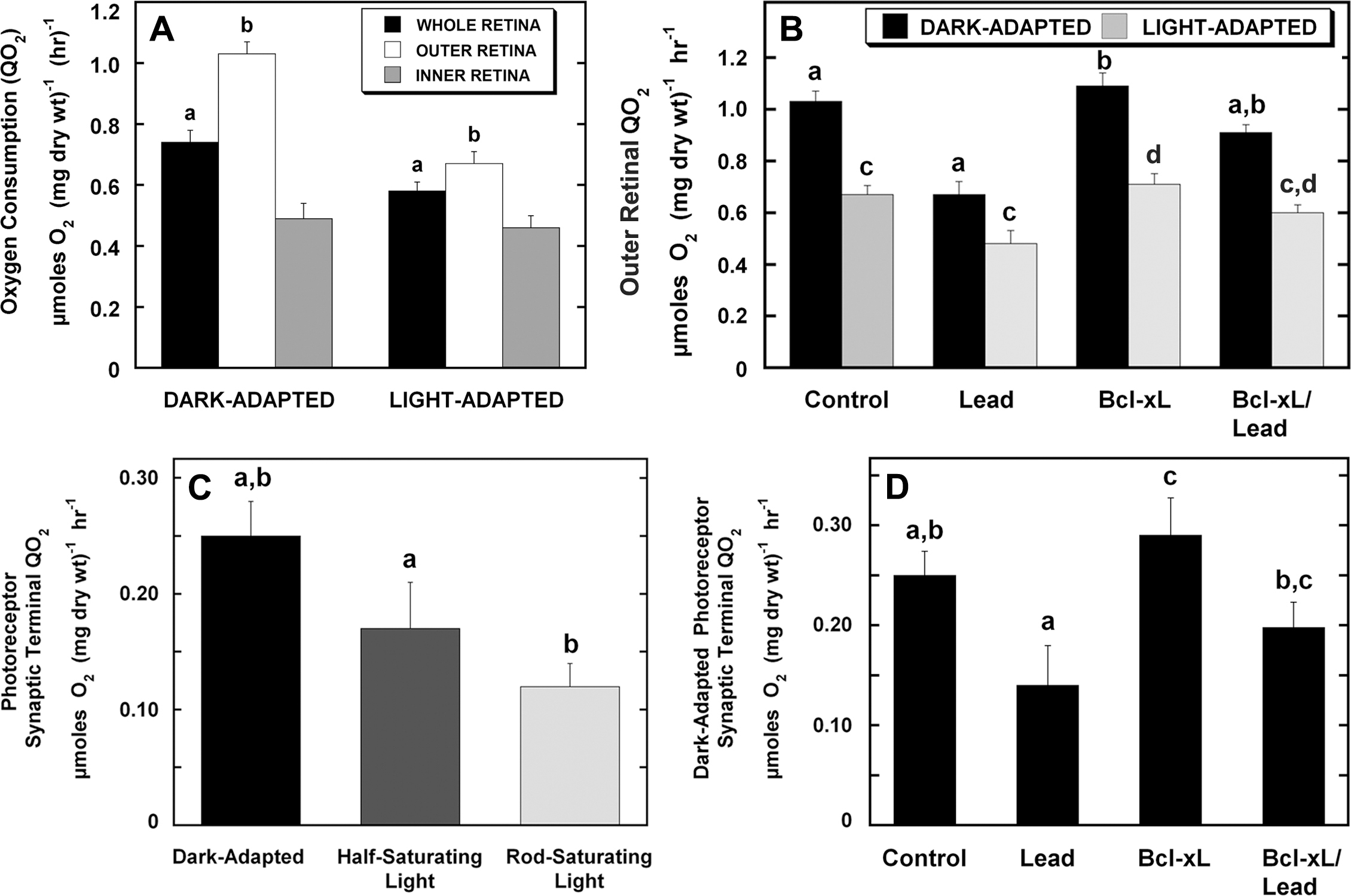Figure 9. Lead decreases photoreceptor and synaptic terminal oxygen consumption (QO2) that is partially blocked by Bcl-xL overexpression. A: The QO2 in dark- and light-adapted whole retina, outer retina, and inner retina of adult control mice. Light decreased whole and
outer retinal QO2. To determine QO2 in the outer (photoreceptors) and inner retina, the outer retina was pharmacologically isolated from the inner retina using
2-amino-4-phosphonobutyric acid (APB), 6-cyano-7-nitroqunioxaline-2,3-dione (CNQX) or 2,3-dihydroxy-6-nitro-7-sulfamoylbenzo-quinoxaline
(DNQX), and D(-)-2-amino-5-phosphovalerate (APV) as described under Methods. B: Outer retinal QO2 in dark- and light-adapted control, Lead, Bcl-xL and Bcl-xL/Lead adult retinas. Lead decreased dark- and light-adapted outer
retinal QO2, which were partially recovered in the Bcl-xL mice. C: Photoreceptor synaptic terminal QO2 in control dark-adapted retinas and retinas stimulated with half-saturating and rod-saturating light. Photoreceptor synaptic
terminal QO2 was determined by adding CoCl2, nifedipine, or both to the outer retinal pharmacological buffer as described under Methods. D: Dark-adapted photoreceptor synaptic terminal QO2 in control, Lead, Bcl-xL, and Bcl-xL/Lead adult retinas. Lead decreased dark-adapted photoreceptor synaptic terminal QO2 that was partially prevented in the Bcl-xL mice. Values represent mean±SEM measurements from four to seven different mice
from different litters per treatment. Values sharing the same superscript differed from each other at p<0.05.

 Figure 9 of
Perkins, Mol Vis 2012; 18:3029-3048.
Figure 9 of
Perkins, Mol Vis 2012; 18:3029-3048.  Figure 9 of
Perkins, Mol Vis 2012; 18:3029-3048.
Figure 9 of
Perkins, Mol Vis 2012; 18:3029-3048. 